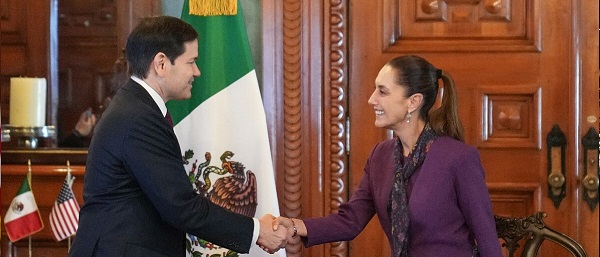Opinion
Ordinary working Canadians are not buying into transgender identity politics

From LifeSiteNews
By Jonathon Van Maren
Progressives don’t seem to understand that most people simply trying to make a living aren’t interested in being hectored about their insufficiently up-to-date views on however many genders the Canadian establishment currently believes in.
A couple of weeks ago, I made the mistake of turning on the news on my car radio. It was the CBC, and a panel was discussing Canada’s housing crisis. According to the experts brought on by the CBC, this crisis was accompanied by a shortage in tradesmen, and this shortage was in part due to the fact that construction sites were hostile environments for women and “non-binary people.” This, the panel opined, was a huge problem that needed to be fixed. It reminded me that the salaries of Canadian tradesmen are garnished to pay for this garbage.
Listening to the panel, it struck me how out of touch progressive activists are with the reality of what they would call the “lived experience” of most normal people working normal, blue-collar jobs. Anyone who has worked on a construction site knows that enforcing political correctness – especially the swiftly moving Overton Window of acceptable speech these days – is a fool’s errand. Attempting to police the way men talk to one another on a job site is a great way to ensure hostility from said men, who incidentally have jobs to do.
But progressives don’t seem to understand that most people simply trying to make a living aren’t interested in being hectored about their insufficiently up-to-date views on however many genders the Canadian establishment currently believes in. Case in point is a recent column in the Globe and Mail sounding the alarm about a new Canadian travesty: “Non-binary job applicants are less likely to receive interest from employers if they disclose gender-neutral pronouns on their resume, according to a recent working paper.”
According to University of Toronto economics Ph.D. candidate Taryn Eames in a paper titled “TARYN VERSUS TARYN (SHE/HER) VERSUS TARYN (THEY/THEM): A Field Experiment on Pronoun Disclosure and Hiring Discrimination,” employers appear to be discriminating against “non-binary” Canadians. As Eames says in her abstract:
Thousands of randomly generated, fictitious resumes were submitted to job postings in pairs where the treatment resume contained pronouns listed below the name and the control resume did not. Two treatments were considered: nonbinary ‘they/them’ and binary ‘he/him’ or ‘she/her’ pronouns congruent with implied sex. As such, I estimate discrimination against nonbinary and presumed cisgender applicants who disclose pronouns. Results show that nonbinary applicants face discrimination: disclosing ‘they/them’ pronouns reduces positive employer response by 5.4 percentage points. There is also evidence that discrimination is larger (approximately double) in Republican than Democratic geographies, potentially reflecting attitudinal differences. By comparison, results are inconclusive as to whether presumed cisgender applicants who disclose pronouns are discriminated against.
In her paper, Eames states that there is “strong evidence of discrimination against applicants who disclose nonbinary ‘they/them’ pronouns,” and, like the CBC panel, announces that this is a problem that needs to be solved. “Non-binary gender identities are becoming more and more common, especially among younger generations,” she said. “These people are going to be aging into the labour force, and this is going to become a bigger and bigger topic over time.”
The Globe and Mail attempts, sloppily, to tie this study to parental rights policies in New Brunswick and elsewhere, as well as implying that Alberta’s proposal to ban sex change surgeries for minors are also part of an anti-trans trend that is “trickling down” into the workplace. “Even in situations where a hiring manager is open to hiring a non-binary employee, there may be perceived obstacles,” the Globe and Mail stated. “Customer-service positions, for instance, an employer might have concerns about how they will manage situations that can arise from employing a non-binary person.”
The reporters assume, of course, that “non-binary” – that is, claiming to be neither male nor female – is a real identity that should be accepted by every employer and all of society at large. The assumption is that there is no debate over this recently invented identity category whatsoever, and that the task at hand is to find ways of forcing employers to proactively affirm the assertions of LGBT activists. They apparently do not stop to consider the fact that many employers simply want to do business and not be forced into cooperating with an ideology that they are ambivalent about.
Business
Pulling back the curtain on the Carney government’s first budget

From the Fraser Institute
By Jake Fuss and Grady Munro
The Carney government will spend more, run larger deficits and accumulate more debt than was previously planned by the Trudeau government.
In the 1939 film the Wizard of Oz, Dorothy and her companions travel to the Emerald City to meet the famous Wizard of Oz who will solve all their problems. When first entering the Wizard’s chambers, the group sees a giant ghostly head that meets their expectations of the “Great and Powerful Oz.” However, later on in the film (much to their disappointment) we learn that the Wizard is nothing more than an ordinary man operating a machine behind a curtain.
Canadians might feel a similar kind of disappointment about the Carney government’s first budget tabled on Tuesday. Prime Minister Carney promised a “very different approach” than that of his predecessor regarding Ottawa’s finances, and at first glance the budget appears to be this new approach. But when you pull back the curtain, it’s simply an escalation of the same failed fiscal policies Canadians have suffered for the last decade.
For context, the Trudeau government’s approach to government finances was record-high levels of spending, persistent deficits and massive debt accumulation. The Trudeau government created a fiscal mess, and as a “responsible fiscal manager” the Carney government has promised to clean it up.
To that end, the Carney government now separates spending into two categories: “operating spending” and “capital investment.” Capital investment includes any spending or tax expenditure (e.g. tax credits and deductions) that contribute to the production of an asset (e.g. infrastructure, machinery or equipment). Operating spending includes everything else, and is supposed to represent “day-to-day” government spending.
The government plans to balance the “operating budget”—meaning it will match operating spending to revenue—by 2028/29, while leaving capital investments to be financed through borrowing. Importantly, when calculating the operating balance, the government counts revenues that are foregone due to tax expenditures that are considered to be capital investments.
To help find the savings needed to balance its operating budget by 2028/29, the government initiated a “Comprehensive Expenditure Review” this past summer—the budget reveals the review’s results. Part of the review included a long overdue reduction in the size of the federal public service, as the government will cut 16,000 positions this year, and reach a total reduction of almost 40,000 by 2028/29 compared to levels seen two years ago. As a result of this spending review, the budget projects spending in 2028/29 will be $12.8 billion lower than it otherwise would have been.
This is the fiscal picture the Carney government is focusing on, and the one it undoubtedly wants Canadians to focus on, too. When taken at face value, balancing the operating budget, initiating a spending review, cutting the federal bureaucracy, and focusing on greater investment would certainly appear to be a different approach than the Trudeau government—which made no meaningful effort to balance the budget or restrain spending during its tenure, grew the bureaucracy, and allowed business investment to collapse under its watch.
But here’s the problem. When you pull back the curtain, all the rhetoric and accounting changes are just a way to obscure the fact the Carney government will spend more, run larger deficits and accumulate more debt than was previously planned by the Trudeau government.
Both operating spending and capital investment (which represents either additional spending or foregone revenue) impact the bottom line, and by separating the two the Carney government is simply obscuring the true state of Ottawa’s finances. If we ignore the government’s sleight of hand and instead compare total government spending against the revenues that are actually collected, the true size of the budget deficit this year is expected to equal $78.3 billion. Not only is that considerably more than the “operating” deficit the government is focusing on, it’s also nearly double the $42.2 billion deficit that was originally planned by the Trudeau government.
The story is similar for years to come. While the Carney government claims it will balance the operating budget by 2028/29, the overall deficit will be $57.9 billion that year. Over the four years from 2025/26 to 2028/29, overall deficits under the Carney government will equal a combined $265.1 billion. In comparison, the Trudeau government had only planned to run deficits equaling a combined $131.4 billion during those same four years—meaning the Carney government plans to borrow more than twice as much as the Trudeau government.
Driving this increase in borrowing is a combination of lower revenues and higher spending. From 2025/26 to 2028/29, the Carney government expects to collect $70.5 billion fewer revenues than the Trudeau government had previously projected. This difference likely comes down to a combination of the economic impact of U.S. tariffs along with various tax measures implemented by the Carney government that lower revenues (including cancelling a proposed increase to capital gains taxes and cutting the bottom federal personal income tax rate).
On the flip side, the Carney government plans to spend $63.4 billion more in total than the Trudeau government due to the introduction of considerable new spending commitments (notably on defence and housing), and the expectation of higher interest payments on its debt. The reality that spending is only set to rise under the Carney government stands in stark contrast to the prime minister’s rhetoric regarding “austerity” and the “ambitious savings” found by the government’s so-called spending review.
Higher spending and larger deficits will help grow the mountain of federal debt. By 2028/29, the Trudeau government had originally projected that total government debt would reach $2.6 trillion—which, based on the budget forecasts, would represent 72.2 per cent of the overall economy. The Carney government’s fiscal plan now puts total federal debt at $2.8 trillion by 2028/29, or 78.6 per cent of the overall economy. For perspective, the last time total federal debt pushed 80 per cent of the economy was during the 1990s when Canada teetered on the brink of a fiscal crisis.
Finally, the government’s approach to spending and the deficit doesn’t seem to be in line with what Canadians wanted to see from this budget. A poll conducted prior to the budget showed that 69 per cent of respondents felt it’s important for the government to balance the budget, compared to just 27 per cent who supported continued deficit spending. In fact, three out of five respondents felt that too much government spending has contributed to the rising cost of living and inflation—the issue they’re most concerned about.
Like a certain Wizard, Prime Minister Carney has made grand promises to fix many of the serious problems facing Canada. At first glance, the Carney government’s first budget may appear to deliver a new plan that will get federal finances back in order. Just pay no attention to the man behind the curtain.
International
The capital of capitalism elects a socialist mayor

New York City — the beating heart of American capitalism — has handed the keys to a socialist. Zohran Mamdani, a 34-year-old Democratic Socialist assemblyman from Queens, captured City Hall on Tuesday night, defeating former Governor Andrew Cuomo and Republican Curtis Sliwa in a bitterly fought three-way contest that upended the city’s political order. The Associated Press called the race less than an hour after polls closed, projecting Mamdani at 50.4% to Cuomo’s 41.3%, with Sliwa finishing a distant third at 7.5%. Mamdani, born in Uganda and raised on Manhattan’s Upper West Side, will become the city’s first Muslim and first openly socialist mayor.
Mamdani’s win marks a generational and ideological break from the city’s past, one that rattled Wall Street, alarmed business leaders, and divided Democrats. A proud member of the Democratic Socialists of America, Mamdani ran as a firebrand reformer promising to “tax the rich” and dismantle the influence of corporate money in city politics — proposals that critics said would cripple New York’s fragile economy. His campaign drew widespread scrutiny for his prior calls to “defund the police” and his harsh criticism of Israel, which led to accusations of antisemitism.
Cuomo’s attempt at a political resurrection fell flat. Despite spending more than $12 million on his independent campaign and receiving support from super PACs pouring in roughly $55 million, the former governor could not overcome the wave of progressive enthusiasm that propelled Mamdani from longshot to frontrunner. In a last-ditch effort to stave off defeat, Cuomo earned late backing from President Trump, outgoing Mayor Eric Adams and a handful of moderate Republicans, including Rep. Mike Lawler, who labeled him “the lesser of two evils.” Even that wasn’t enough.
The election itself was the city’s first serious three-way showdown in decades. Mamdani, Cuomo, and Sliwa clashed repeatedly over crime, affordability, and the future of policing. Cuomo leaned on his executive record and cast himself as a pragmatic problem solver, while Mamdani framed the race as a moral reckoning for a city that, in his words, “forgot who it’s supposed to serve.” His online following, slick digital outreach, and constant street presence helped galvanize younger voters, particularly in Brooklyn and Queens, where turnout surged. Meanwhile, Sliwa — the perennial GOP candidate — failed to broaden his appeal beyond his Guardian Angels base.
As he prepares to take office on January 1, 2026, Mamdani faces steep headwinds. His tax-and-spend agenda will require approval from state lawmakers and Governor Kathy Hochul, who has already rejected the idea of raising taxes. Still, Assembly Speaker Carl Heastie and Senate Majority Leader Andrea Stewart-Cousins have signaled they’ll work with him to advance portions of his sweeping platform. The victory, however, sends a message beyond policy: the city that built capitalism has now chosen a mayor who wants to dismantle it. Whether Zohran Mamdani’s socialist experiment reinvents or wrecks New York will soon be tested in the only arena that matters — reality.
-

 Agriculture20 hours ago
Agriculture20 hours agoDanish Cows Collapsing Under Mandatory Methane-Reducing Additive
-

 Bruce Dowbiggin2 days ago
Bruce Dowbiggin2 days agoA Story So Good Not Even The Elbows Up Crew Could Ruin It
-

 Alberta2 days ago
Alberta2 days agoCanada’s heavy oil finds new fans as global demand rises
-

 Daily Caller1 day ago
Daily Caller1 day agoTrump Reportedly Planning Ground Troops, Drone Strikes On Cartels In Mexico
-

 Health2 days ago
Health2 days agoRFK Jr’s argument for studying efficacy of various vaccines
-

 Addictions2 days ago
Addictions2 days agoThe War on Commonsense Nicotine Regulation
-

 Business1 day ago
Business1 day agoTrump’s Tariffs Have Not Caused Economy To Collapse
-

 Alberta1 day ago
Alberta1 day agoAlberta government’s plan will improve access to MRIs and CT scans







